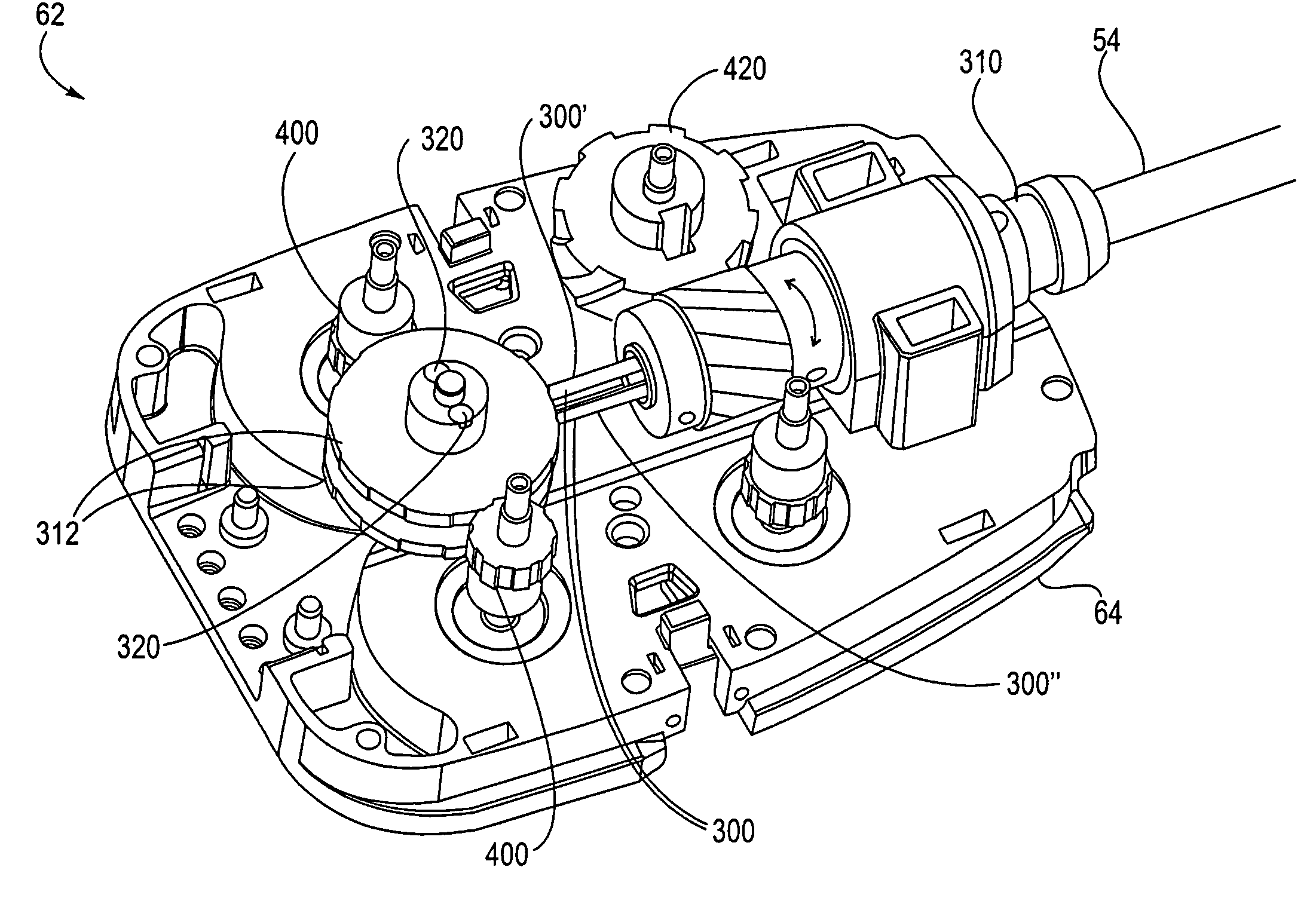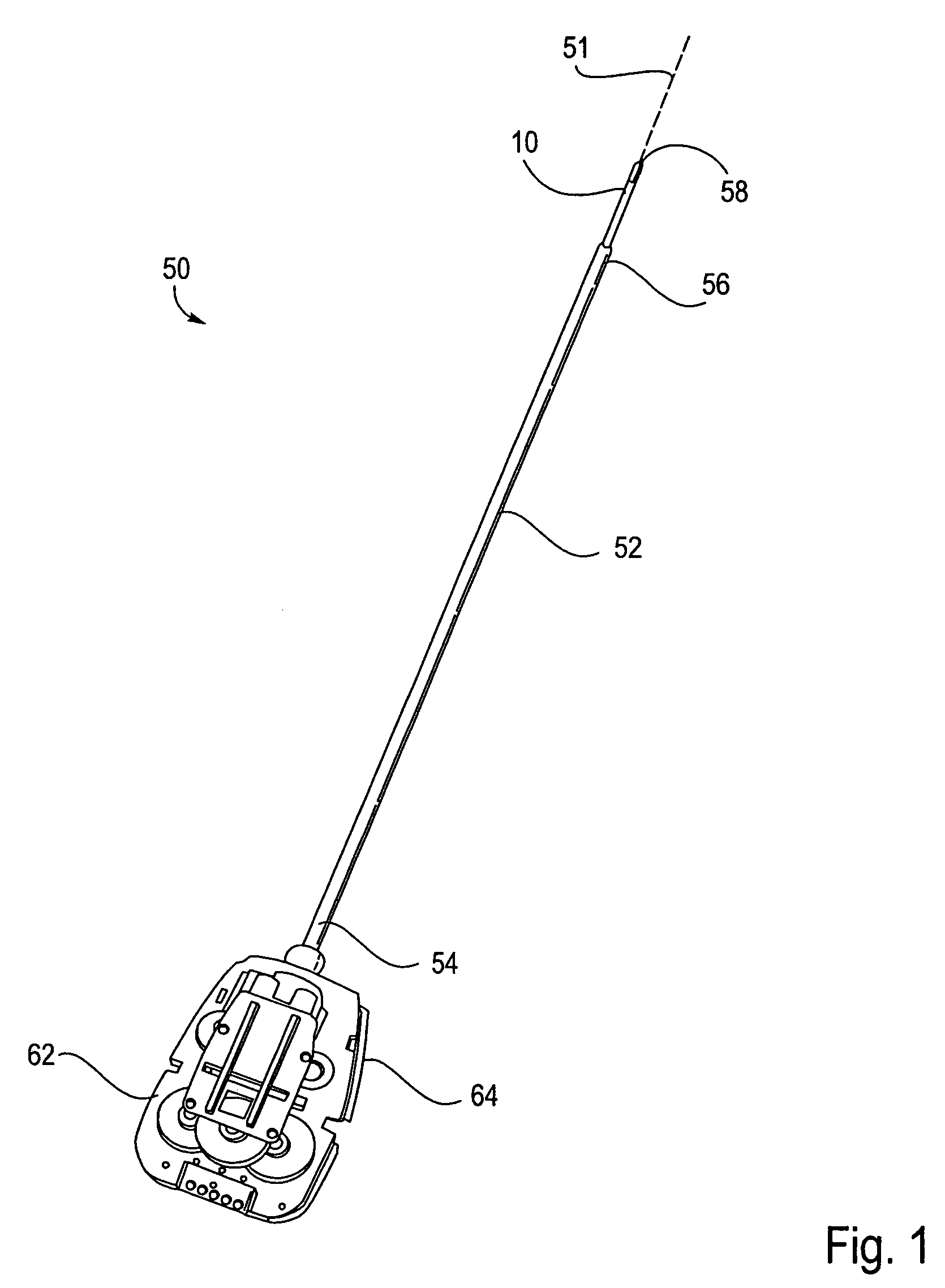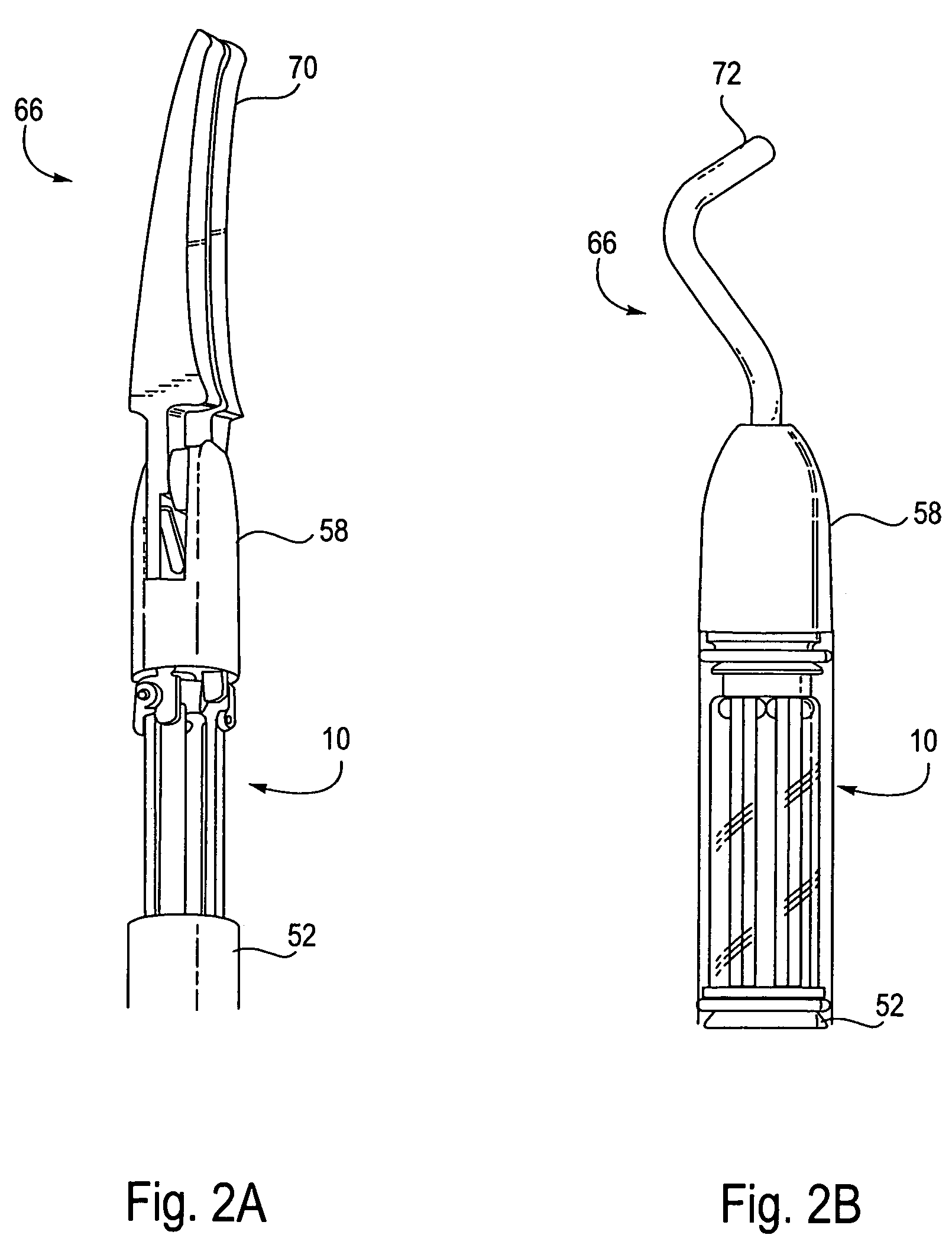Platform link wrist mechanism
a wrist mechanism and platform technology, applied in the field of surgical tools, can solve the problems of denying the surgeon the flexibility of tool placement found, saving millions of hospital days and millions of dollars annually in hospital residency costs, and relating to current mis technology
- Summary
- Abstract
- Description
- Claims
- Application Information
AI Technical Summary
Benefits of technology
Problems solved by technology
Method used
Image
Examples
Embodiment Construction
[0061]FIG. 1 illustrates a surgical tool 50 of the present invention which is used in robotic surgery systems. The surgical tool 50 includes a rigid shaft 52 having a proximal end 54, a distal end 56 and a longitudinal axis therebetween. The proximal end 54 is coupled to a tool base 62. The tool base 62 includes an interface 64 which mechanically and electrically couples the tool 50 to a manipulator on the robotic arm cart. A distal member, in this embodiment a distal clevis 58, is coupled to shaft 52 by a wrist joint or wrist mechanism 10, the wrist mechanism 10 providing the distal clevis 58 with at least 1 degree of freedom and ideally providing at least 3 degrees of freedom. The distal clevis 58 supports a surgical end effector 66, the actual working part that is manipulable for effecting a predetermined treatment of a target tissue. Exemplary surgical end effectors 66 are illustrated in FIGS. 2A-2B. Grasping jaws 70 are illustrated in FIG. 2A, while a cautery isolation effector...
PUM
 Login to View More
Login to View More Abstract
Description
Claims
Application Information
 Login to View More
Login to View More - R&D
- Intellectual Property
- Life Sciences
- Materials
- Tech Scout
- Unparalleled Data Quality
- Higher Quality Content
- 60% Fewer Hallucinations
Browse by: Latest US Patents, China's latest patents, Technical Efficacy Thesaurus, Application Domain, Technology Topic, Popular Technical Reports.
© 2025 PatSnap. All rights reserved.Legal|Privacy policy|Modern Slavery Act Transparency Statement|Sitemap|About US| Contact US: help@patsnap.com



